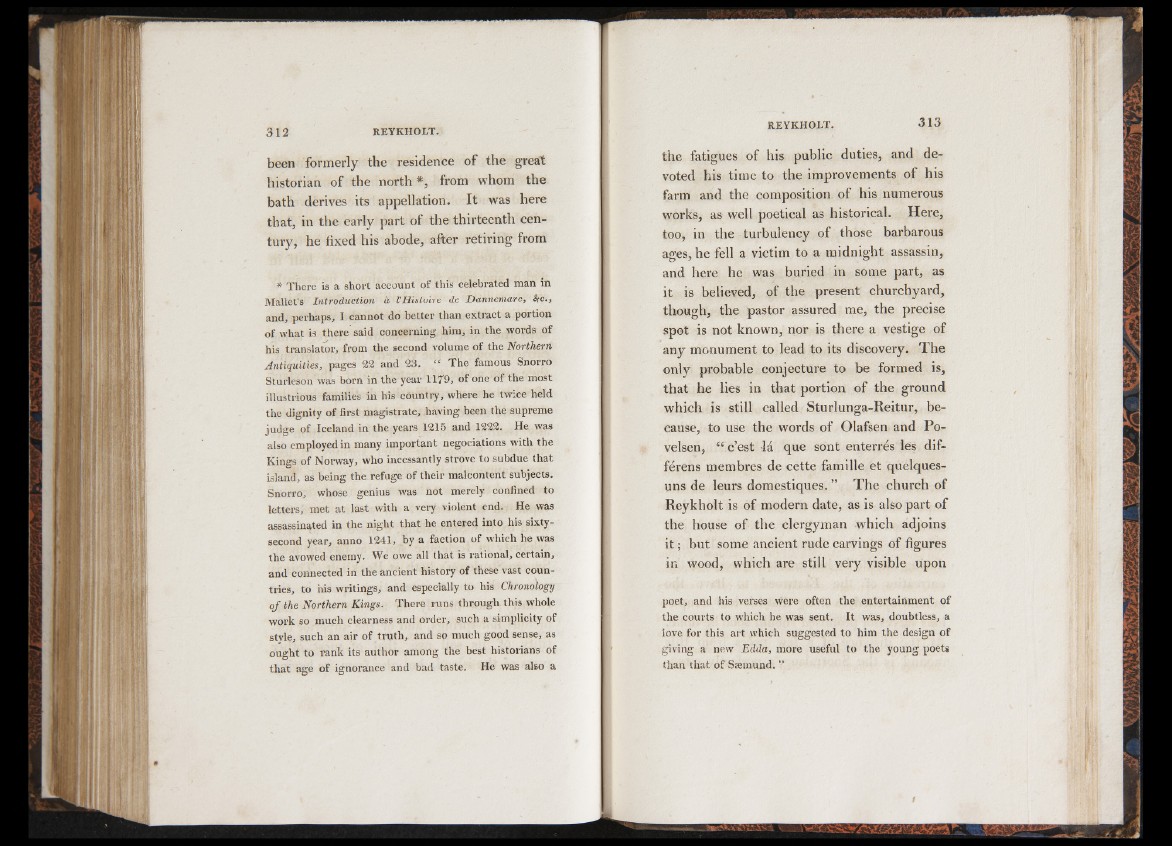
been formerly the residence of the great
historian of the north *, from whom the
bath derives its appellation. It was here
that, in the early part of the thirteenth century,
he fixed his abode, after retiring from
* There is a short account of this celebrated man in
Mallet’s Introduction à VHistoire de Dannemarc, #c.,
and, perhaps, I cannot do better than extract a portion
of what is there said concerning him, in the words of
his translator, from the second volume of the Northern
Antiquities, pages 22 and 23. “ The famous Snorro
Sturleson was born in the year 1179, of one of the most
illustrious families in his country, where he twice held
the dignity of first magistrate, having been the supreme
judge of Iceland in the years 1215 and 1222. He was
also employed in many important négociations with the
Kings of Norway, who incessantly strove to subdue that
island, as being the refuge of their malcontent subjects.
Snorro, whose genius was not merely confined to
letters, met at last with a very violent end. He was
assassinated in the night that he entered into his sixty-
second year, anno 1241, by a faction of which he was
the avowed enemy. We owe all that is rational, certain,
and connected in the ancient history of these vast countries,
to his writings, and especially to his Chronology
of the Northern Kings. There runs through this whole
work so much clearness and order, such a simplicity of
style, such an air of truth, and so much good sense, as
ought to rank its author among the best historians of
that age of ignorance and bad taste. He was also a
the fatigues of his public duties, and devoted
his time to the improvements of his
farm and the composition of his numerous
works, as well poetical as historical. Here,
too, in the turbulency of those barbarous
ages, he fell a victim to a midnight assassin,
and here he was buried in some part, as
it is believed, of the present churchyard,
though, the pastor assured me, the precise
spot is not known, nor is there a vestige of
any monument to lead to its discovery. The
only probable conjecture to be formed is,
that he lies in that portion of the ground
which is still called Sturlunga-Reitur, because,
to use the words of Olafsen and Po-
velsen, “ c’est la que sont enterres les dif-
ftirens membres de cette famille et quelques-
uns de leurs domestiques. ” The church of
Reykholt is of modern date, as is also part of
the house of the clergyman which adjoins
i t ; but some ancient rude carvings of figures
in wood, which are still very visible upon
poet, and his verses were often the entertainment of
the courts to which he was sent. It was, doubtless, a
love for this art which suggested to him the design of
giving a new Edda, more useful to the young poets
than that of Siemund. ”